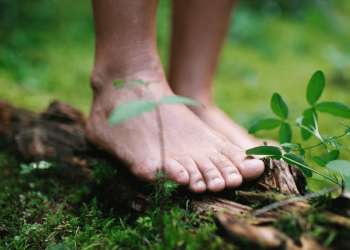In our increasingly fast-paced world, walking has become merely a means to an end a way to get from point A to point B as quickly as possible. We rush through our days, minds cluttered with worries about the future or regrets about the past, barely noticing the ground beneath our feet. Yet within this simple, everyday activity lies a profound opportunity for awakening: mindful walking practice transforms ordinary movement into a meditation in motion, a gateway to presence, and a path toward deeper connection with ourselves and the world around us.
Mindful walking, also known as walking meditation, is an ancient practice found in Buddhist traditions and increasingly embraced by modern wellness practitioners. Unlike seated meditation, which can feel static or challenging for those uncomfortable with stillness, walking meditation offers a dynamic entry point into mindfulness. It meets us where we already are in motion and invites us to bring fuller awareness to an activity we perform countless times each day.
The Foundation: Understanding Mindfulness in Motion
At its heart, mindful walking is about presence. It’s the practice of bringing complete attention to the immediate experience of walking, engaging fully with each step, breath, and sensation as it arises. This isn’t about walking to burn calories, reach a destination, or check a fitness goal off your list. Instead, it’s about walking simply to walk to be fully alive and aware in this moment.
The practice rests on several core mindfulness principles. First is intentionality: we deliberately choose to pay attention to the experience of walking rather than letting our minds wander on autopilot. Second is non-judgment: we observe our experience without labeling it as good or bad, pleasant or unpleasant. We simply notice what is. Third is present-moment awareness: we anchor our attention in the here and now rather than dwelling in past or future. Finally, there’s acceptance: we allow our experience to be exactly as it is, working with rather than against our natural rhythms and tendencies.
When we walk mindfully, we’re training the mind to stay present with direct physical experience. This creates a foundation of embodied awareness that can extend into all areas of life. The feet touching the ground, the breath moving in and out, the body balanced and moving through space these become objects of meditation as valid and powerful as the breath in seated practice.
Techniques for Cultivating Walking Awareness
Beginning a mindful walking practice doesn’t require special equipment, perfect weather, or exotic locations. You can practice in your backyard, along a hallway, in a park, or on a city sidewalk. The key is approaching the activity with intention and attention.
Start by choosing a path where you can walk for ten to thirty paces without interruption. This might be a straight line in your home, a circular path in a garden, or a short stretch of quiet trail. Initially, a dedicated space without distractions helps you establish the practice, though eventually you’ll find you can walk mindfully anywhere.
Begin by standing still and taking a few conscious breaths. Feel your feet on the ground, the weight of your body, the air on your skin. This brief pause creates a transition from doing mode into being mode, signaling to yourself that this walking will be different from your usual rushing about.
As you begin to walk, slow down significantly much slower than your normal pace. This isn’t about going as slowly as possible, but about finding a pace that allows you to observe each component of the walking process with clarity. Some practitioners walk so slowly that each step takes several seconds; others maintain a more natural but still deliberate pace. Experiment to find what allows you to stay most present.
Direct your attention to the soles of your feet. Notice the sensation as your heel lifts, the foot moves forward through air, and then makes contact with the ground again. Feel the subtle shift of weight from heel to midfoot to toes. Some teachers suggest mentally noting “lifting, moving, placing” or simply “left, right” to help anchor attention. These mental labels aren’t necessary, but they can be helpful when the mind is particularly restless.
You might also work with breath awareness, coordinating steps with inhalations and exhalations. Perhaps you breathe in for three steps and out for three steps, finding a natural rhythm that doesn’t strain. This integration of breath and movement can deepen the meditative quality of the practice.
Another approach involves whole-body awareness. Rather than focusing narrowly on the feet, expand your attention to include the swinging of your arms, the movement of your legs, the rotation of your hips, the alignment of your spine, the position of your head. Feel your body as an integrated whole, moving through space with grace and balance. Notice how your center of gravity shifts, how your muscles engage and release, how your entire organism works in harmony to create this miracle of bipedal locomotion.
Environmental awareness offers yet another dimension. While maintaining awareness of your body, also open to what’s around you the play of light and shadow, the sound of birds or traffic, the smell of grass or rain, the feeling of wind or sun on your skin. This doesn’t mean thinking about these things or getting lost in stories about them, but simply receiving sensory impressions as they arise, allowing yourself to be in relationship with your surroundings.
The Gift of Return: Working with the Wandering Mind
No matter how committed you are to staying present, your mind will wander. This is not a failure it’s simply what minds do. You might take a few mindful steps and then suddenly realize you’ve been planning dinner, replaying a conversation, or worrying about work for the past five minutes. This moment of recognition is actually precious. It’s the moment of waking up, of remembering your intention to be present.
When you notice your mind has wandered, pause briefly. Acknowledge where your attention went without self-criticism. Then gently return your focus to the immediate physical sensations of walking. This cycle of attention wandering and returning is the practice itself. Each time you notice distraction and come back, you’re strengthening your capacity for awareness.
Over time, you may notice patterns in your distraction. Perhaps your mind tends toward planning when you’re anxious or toward reminiscing when you’re nostalgic. These patterns offer insight into your mental habits, but during the practice itself, don’t analyze them. Simply notice and return to the present moment.
Building a Sustainable Practice
Consistency matters more than duration when establishing mindful walking as a practice. It’s better to walk mindfully for five minutes daily than to have an ambitious hour-long session once a week. Start with what feels manageable perhaps five or ten minutes and let your practice grow organically.
Many people find it helpful to anchor the practice to an existing routine. You might walk mindfully from your car to your office, or take a brief walking meditation after lunch, or do a few minutes before bed. By connecting the practice to something you already do regularly, you’re more likely to maintain it.
Consider varying your approach to sustain interest and deepen your practice. Some days you might walk very slowly with intense focus on foot sensations. Other days you might walk at a more natural pace, emphasizing breath awareness. You might practice indoors when you need calm focus or outdoors when you want to cultivate appreciation for nature. This variety keeps the practice fresh while building different aspects of awareness.
Formal walking meditation sessions can be complemented by bringing mindful awareness to your ordinary walking throughout the day. You don’t need to walk slowly or obviously in meditation mode. Simply choose to be present for a few steps as you move from room to room, walk to the mailbox, or cross a parking lot. These micro-practices weave mindfulness into the fabric of daily life.
Harvesting the Benefits
The gifts of mindful walking practice extend far beyond the walking itself. Physically, the practice can improve balance, posture, and body awareness. The deliberate attention to movement helps you notice and potentially correct habitual patterns that might contribute to pain or injury. The gentle exercise, especially when practiced outdoors, supports overall health and wellbeing.
Mentally, the practice cultivates concentration and present-moment awareness that transfer to other activities. Many practitioners find that regular walking meditation makes them more grounded, less reactive, and more able to respond skillfully to life’s challenges. The practice creates a felt sense of embodiment that can serve as an anchor during stressful times.
Emotionally, mindful walking can be remarkably calming and centering. The combination of gentle movement, rhythmic breath, and focused attention has a naturally settling effect on the nervous system. For those who struggle with anxiety, depression, or rumination, the practice offers a way to shift out of mental loops and into direct sensory experience.
Perhaps most profoundly, mindful walking practice can transform our relationship with everyday activities. When we learn to walk with full presence, we begin to see that any moment any activity can be a doorway to awakening. Washing dishes, waiting in line, drinking tea all of these can become opportunities for mindfulness when we bring the same quality of attention we cultivate in walking meditation.
Conclusion: Each Step a Beginning
Mindful walking practice is both elegantly simple and infinitely deep. It requires no special beliefs, equipment, or abilities only the willingness to pay attention to something we do every day. Yet within this simplicity lies profound potential for transformation.
As you develop your practice, remember that there’s no destination to reach, no perfect state to achieve. Each step is complete in itself, each moment an opportunity to wake up to the richness of being alive. The path of mindful walking isn’t about getting somewhere else it’s about being fully present with where you are.
In a world that constantly pulls our attention toward the next thing, the next goal, the next destination, mindful walking invites us to stop rushing toward some imagined future and instead arrive fully in this precious present moment. Here, in this step, in this breath, in this instant of contact between foot and earth, we find what we’ve been seeking all along: the simple, extraordinary gift of being awake to life itself.






